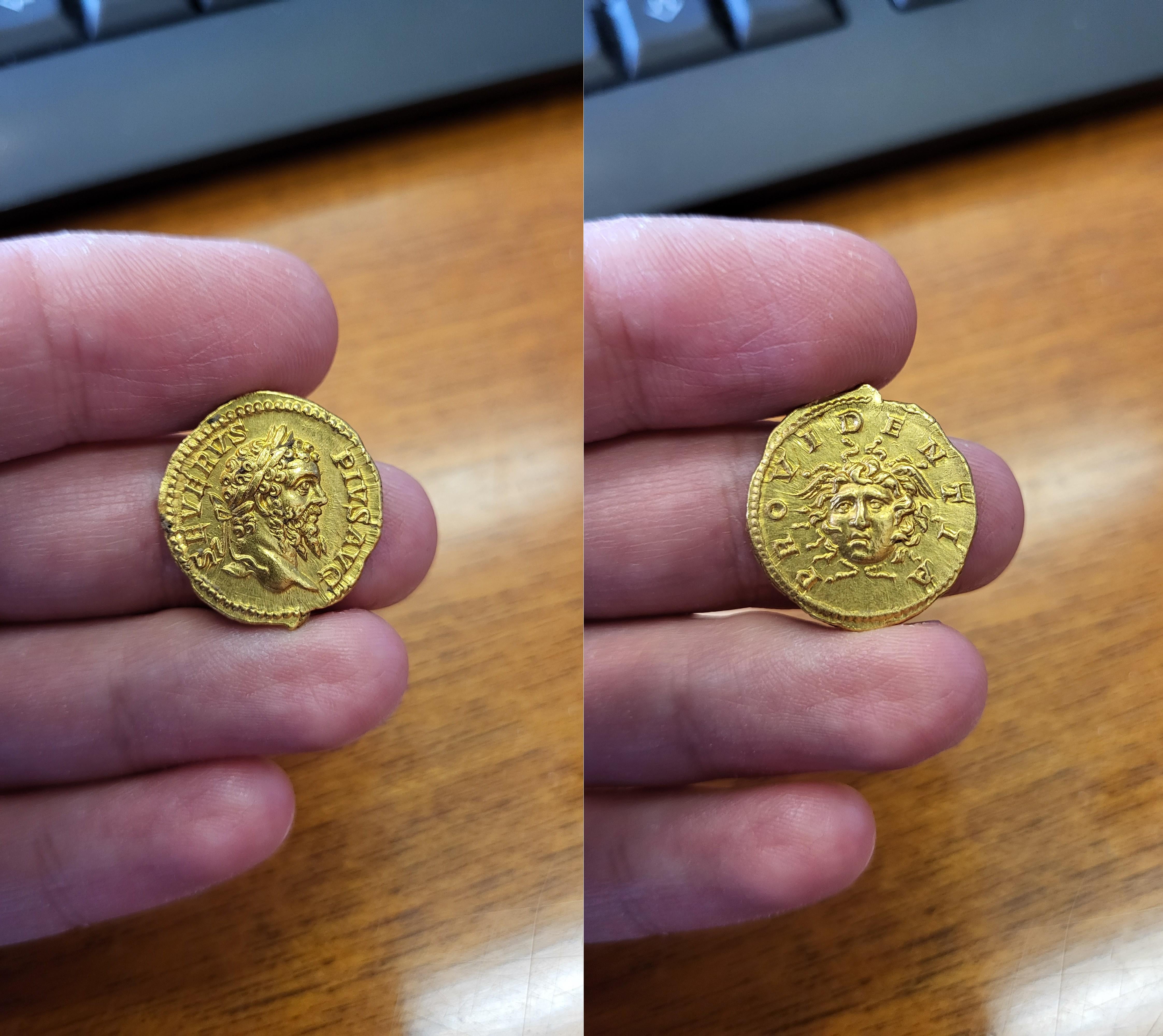
Hello again, everyone!
Today is one of our favorite days of the year – it’s Halloween, folks! As you all know, the ancient world was full of tales of horror and fright. Between man-eating cyclopes, fearsome minotaurs, ravenous sea monsters, and blood-chilling ghostly apparitions, one wonders how any Greek or Roman ever dared to leave the house.
For today’s coins, we’re looking at another kind of terrifying creature – the gorgon. The most famous, of course, are Medusa and her sisters, Euryale and Stheno: three women with snakes for hair and a gaze that could turn any living being to stone. As is often the case in mythology, the story isn’t straightforward and there isn’t just one version of the tale. According to Ovid, Medusa was once a beautiful maiden until she lay with Poseidon in a temple of Athena. In typical Olympian fashion – where the misdeeds of a god become a mortal’s punishment – Athena cursed Medusa, transforming her into a hideous monster. Where that left her sisters is anyone’s guess.
If the curse weren’t enough, Medusa’s end was equally gruesome. The Greek hero Perseus was commanded by King Polydektes to bring him Medusa’s head. With some divine assistance – Athena, Hades, Hermes, and Hephaistos all lent a hand – the hero succeeded in slaying the gorgon, cutting off her head and later using it to petrify the astonished Polydektes upon his return. Medusa’s head was then presented to Athena, who placed it on her shield.
Gorgons would go on to become a popular motif on ancient coinage – think, for instance, of the coins of Neapolis in Macedonia or Apollonia Pontika. On Roman coins, a gorgoneion often adorns the emperor’s cuirass. On this splendid aureus of Septimius Severus (from the du Chastel collection), however, she occupies the entire reverse field. It belongs to a larger group of coins featuring a gorgon (with or without aegis) struck for Septimius Severus and Caracalla in 207-208 CE. The precise meaning of the imagery, especially in connection with the legend ‘PROVIDENTIA’, remains uncertain: some connect it to Severus’ upcoming campaign in Britain, but more generally, regardless of the specific military context, the gorgoneion served as an apotropaic symbol – an emblem of divine protection (of Minerva, one of Severus’ patron deities) against whatever dangers might threaten the emperor. As the third century unfolded, such dangers would indeed prove to be many.
Happy Halloween, everyone!
by KBRCoinCabinet

1 Comment
Absolutely beautiful coin